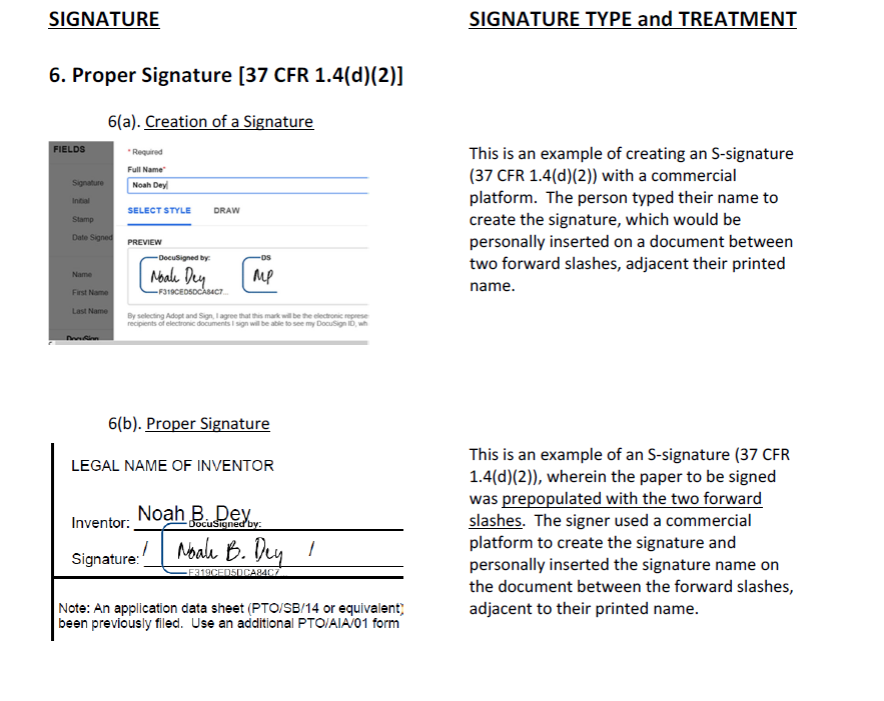by Rivka Monheit
Are electronic signatures accepted by the USPTO? Yes.
When filing a patent application, the US Patent and Trademark Office (USPTO), and patent offices outside of the US require signed documents, including Declarations of Inventorship, Assignments, and Powers of Attorney. While original wet signatures can be used in all jurisdictions to sign these documents, the USPTO and many other jurisdictions accept electronic signatures if they are provided in the proper format. As discussed below, the USPTO accepts electronic signatures that conform to its format and scanned or electronic copies of documents. Thus, for US and PCT applications, electronic signatures generally suffice. Although most US states accept electronic signatures on an assignment, wet signatures should be used and/or foreign counsel consulted when transferring rights relating to foreign patents and patent applications.
US Patent and Trademark Office (USPTO)
For many years, the USPTO has been accepting S-signatures, which merely require the relevant inventor or employee type their own signature between two forward slashes. The USPTO updated its guidance regarding S-signatures in 2020 to clarify how they can be used with commercially available electronic signature platforms. The USPTO’s rule explains that the S-signature must consist only of letters, or Arabic numerals, or both, with appropriate spaces and commas, periods, apostrophes, or hyphens for punctuation, and the person signing the correspondence must insert his or her own S-signature with a first single forward slash mark before and a second single forward slash mark after the S-signature (e.g., /Dr. James T. Jones, Jr./)". (37 C.F.R. § 1.4(d)(2); MPEP 502.02).
For example, my S-signature is: /Rivka Monheit/
It is also acceptable for the signor of a USPTO document to use a commercial electronic signature service, such as Adobe or DocuSign™. However, when doing so, the electronically inserted signature must be placed between two forward slash marks. The signor can either insert the forward slashes when creating the signature, or the forward slashes can be included on the document to be signed and the signature can be placed between the forward slashes. Further, the S-signature must be adjacent to the signor’s printed name.
The USPTO provides the following examples of acceptable S-signatures obtained using an electronic signature service:

Assignments
Although assignments of patent rights must be recorded at the USPTO and in many foreign patent offices, the USPTO does not review the assignment documents and the USPTO’s signature requirements described above are not relevant. Rather, whether a particular assignment is properly signed is determined based on the relevant U.S. state law or the relevant country’s law, in the case of a transfer of foreign patent rights.
Nevertheless, most states in the US permit the use of electronic signatures made using an electronic signature service, such as DocuSign™. Under the Uniform Electronic Transactions Act (UETA), personal property, including patent rights, may be transferred using a compliant electronic signature. All of states in the US have adopted the UETA or a modified version thereof which each allows for the assignment of patent rights using a compliant electronic signature. Additionally, the USPTO records scanned or other electronic copies of assignments; originals are not submitted to the USPTO.
Many countries outside of the US still require handwritten signatures for certain types of patent-related documents, and some also require original or legalized copies of patent-related legal documents. Thus, it is important to check with local counsel to ensure one complies with the local laws of the relevant foreign jurisdictions.




